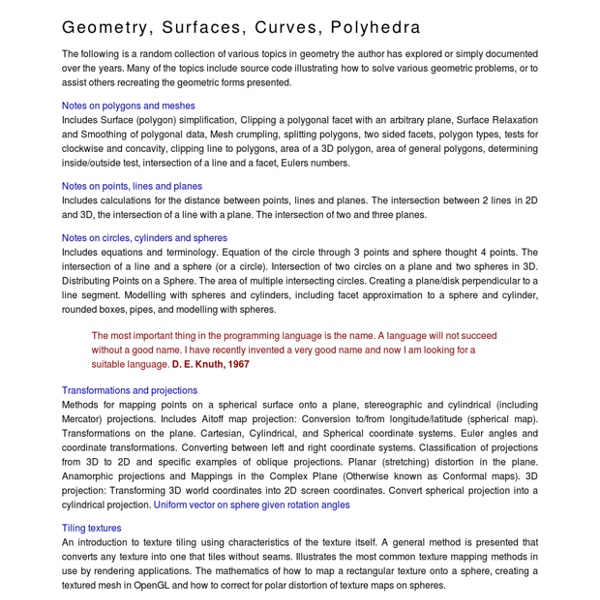Geometry, Surfaces, Curves, Polyhedra

Grasshopper::Lists, Paths, and Trees
G03 Due: April 24 at the start of class Spider-webs and Doilies Manipulating Grasshopper data-trees is hard, even when you understand the concept. This exercise is intended to allow a many "right" answers to be established, from relatively simple to more complex. See how far you can go with it. There is no starting-point file for this -- just open a blank Rhino and Grasshoper file and start in!
Related:
Related:



